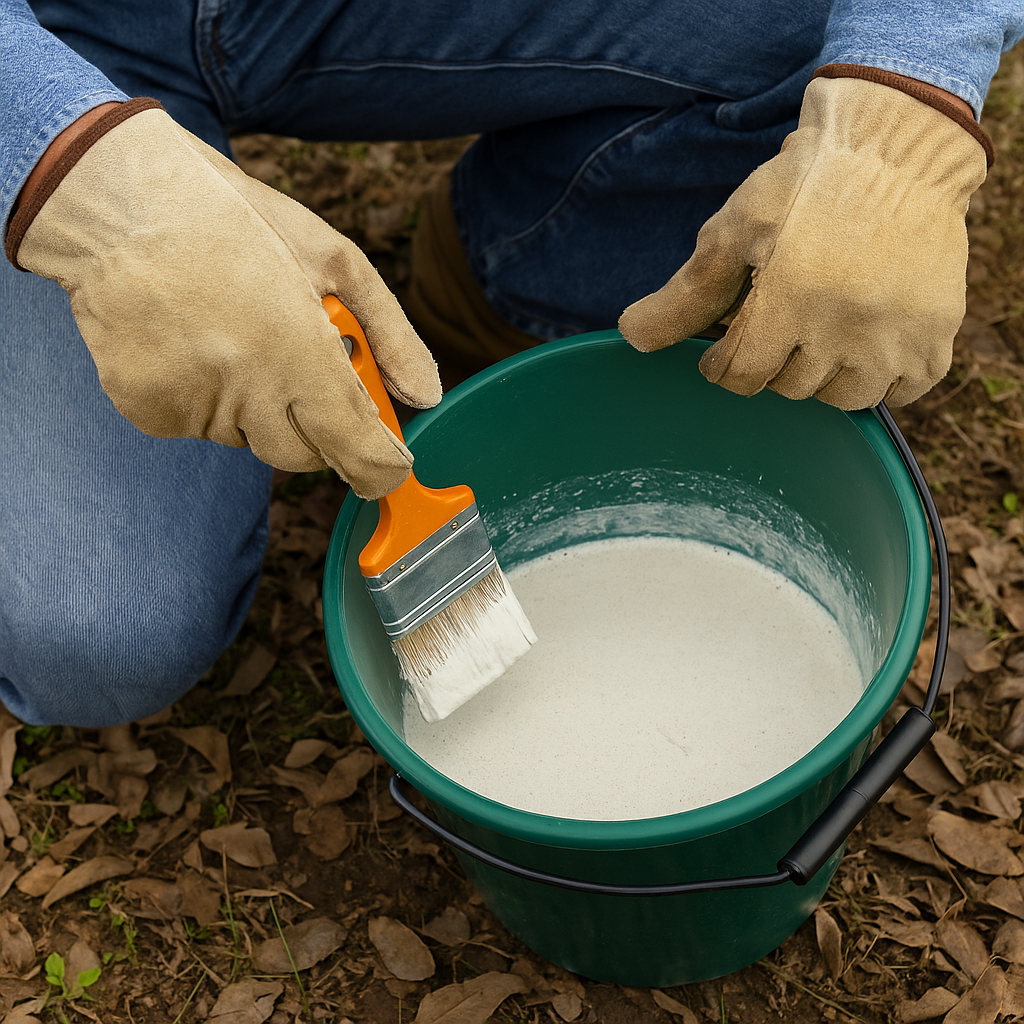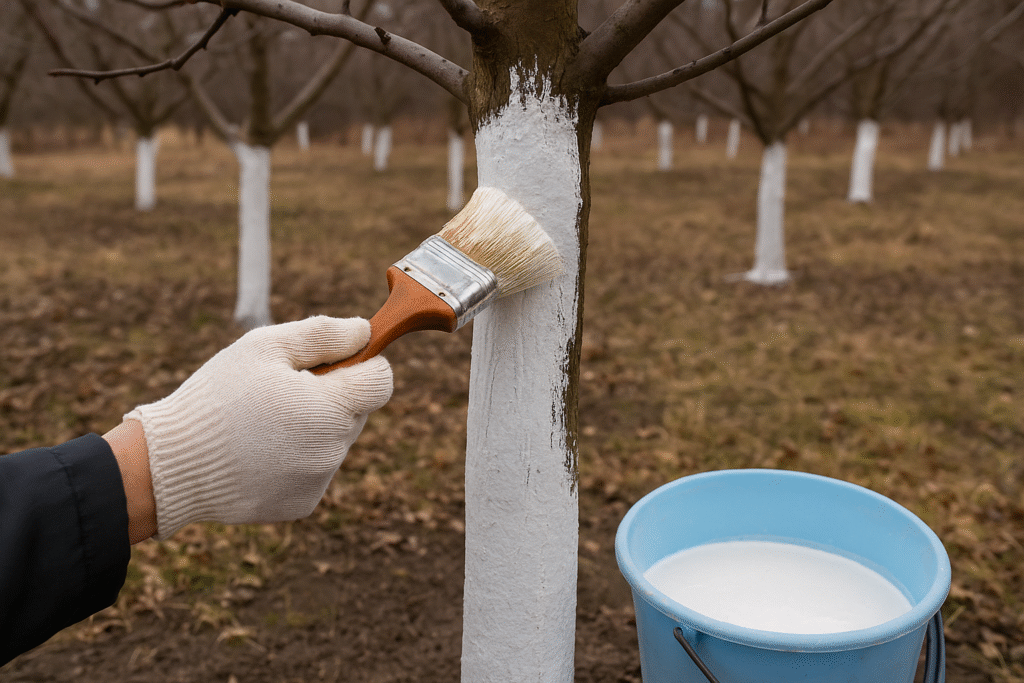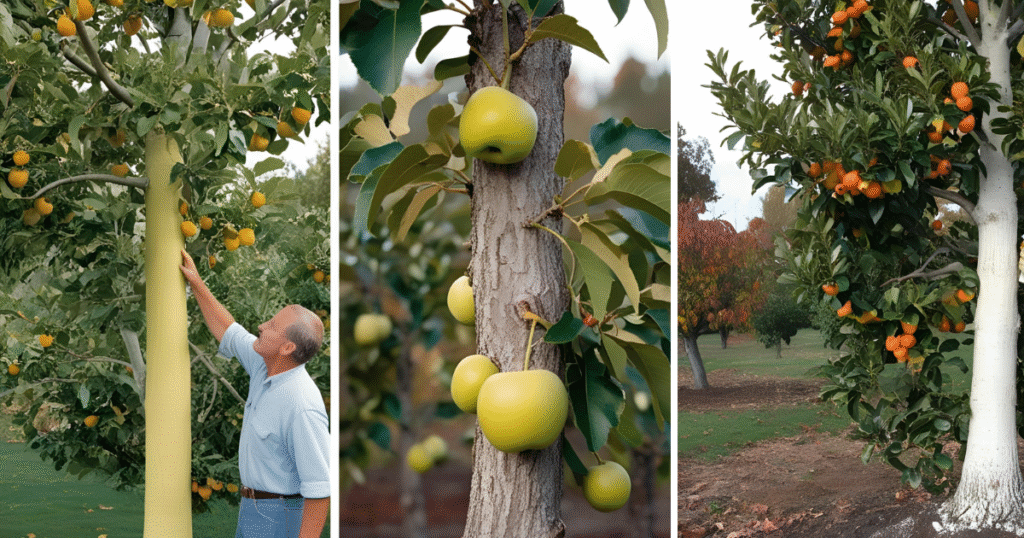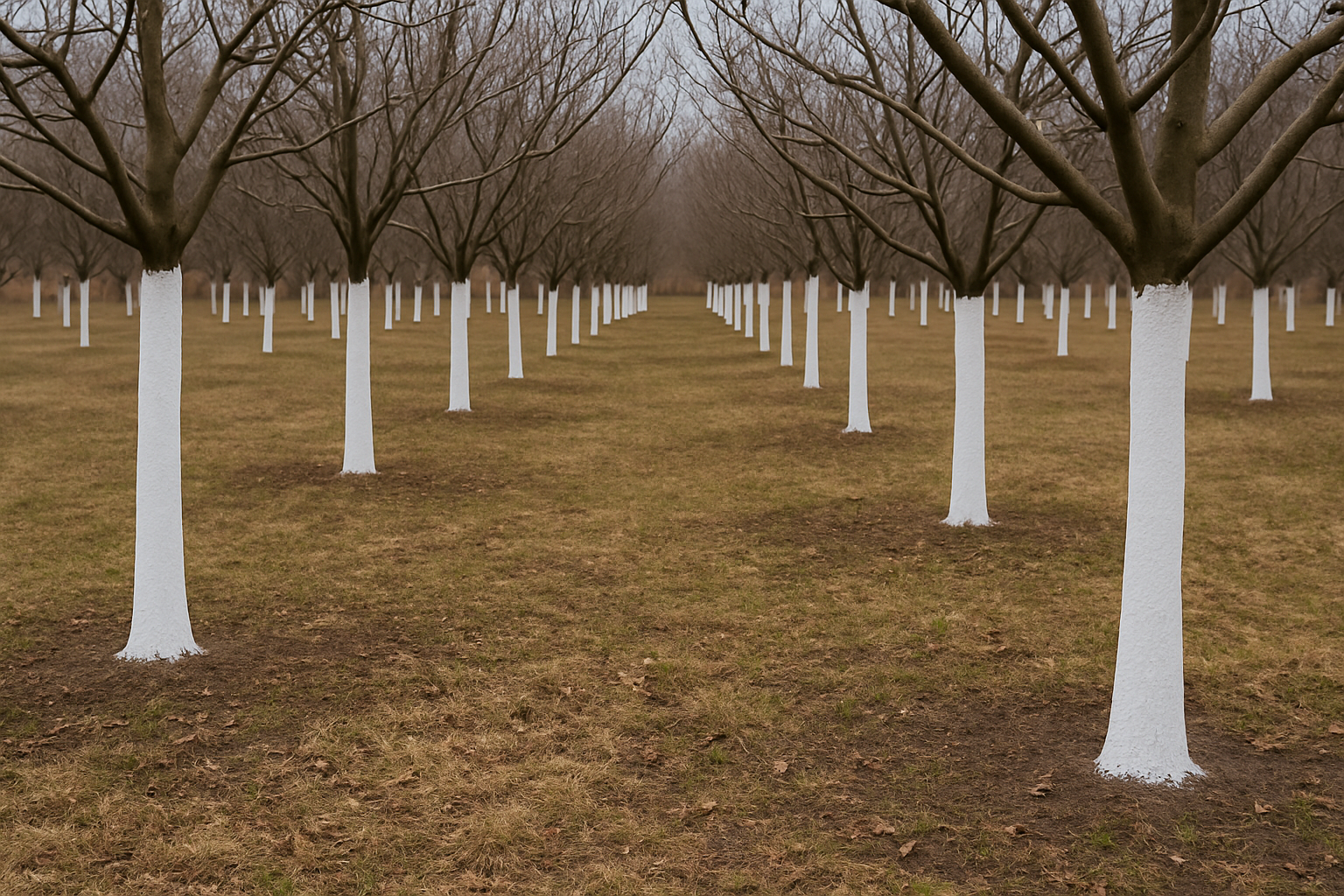Learn how applying lime to fruit trees can protect them from pests, diseases, and harsh weather. Discover the best time, method, and expert tips to keep your orchard thriving year after year
Introduction
Imagine entering your garden and seeing fruit trees loaded with juicy, colorful fruits. Their trunks are strong, their leaves are lush, and there’s hardly a pest in sight. Sounds like a dream, right? In reality, achieving such healthy fruit trees is much easier than you think — and the secret lies in a straightforward practice: applying lime to fruit trees.
Many gardeners overlook this age-old technique, but it can make a massive difference in your trees’ health, growth, and fruit production. Lime acts as a natural protector, guarding the trees against harsh weather, pests, and fungal diseases. When you apply lime at the right time, you create a shield that supports your trees through the challenging winter months.
In this guide, we’ll explain why applying lime to fruit trees is essential, the best times to do it, and the right way to apply it for maximum benefits. Whether you have a small backyard orchard or just a few beloved trees, this simple method can transform your garden into a thriving paradise.
Let’s dive into the wonderful world of lime and discover how a little care can lead to a season full of sweet rewards!
—
Why Applying Lime to Fruit Trees Is Important
Applying lime to fruit trees is much more than a tradition; it plays a vital role in trees’ health. Here is why it matters:
Protection from Extreme Weather: Lime creates a white coat on the trunk that reflects sunlight, preventing sunburn during intense summer days and protecting the bark from splitting during freezing winter nights.
Prevention of Pests: Many insects lay eggs under tree bark. Lime is a physical barrier, discouraging pests like borers and beetles from settling in.
Disease Control: Fungal spores and harmful bacteria often find their way into cracks in the tree bark. Lime helps seal small cracks and discourages disease spread.
Encouraging Healthy Growth: A strong trunk leads to better nutrient transport, which means stronger branches, healthier leaves, and bigger, better fruits.
Tip: Always choose good-quality agricultural lime for better results.
—
Best Time for Applying Lime to Fruit Trees
Timing is everything when it comes to applying lime to fruit trees. The ideal window falls between October and December, just as temperatures drop before the severe winter sets in.
Here’s why winter lime application is best:
Trees enter dormancy, slowing down and focusing energy on root and bark protection.
During this time, the absence of active pests and diseases allows lime to stay intact longer.
Winter protection sets the stage for a healthier, more vigorous spring bloom.
Important : Avoid applying lime during rain, as it can wash away the protective coating.
—
How to Prepare Lime Solution for Trees
Making a lime solution at home is cost-effective and straightforward. Here’s a quick step-by-step guide:
You Will Need:
. Agricultural lime (hydrated lime or whitewash powder)
. Clean water
. A large bucket
. A sturdy paintbrush
Steps:
1. Mix Properly: Add 1 part lime to 2 parts water in a large bucket.
2. Stir Well: Mix until you achieve a thick, creamy consistency, similar to wall paint.
3. Adjust: If the solution is too runny, add more lime; if it is too thick, add a little water.
4. Test: Try brushing it on a sample surface. It should coat evenly without dripping.
Pro Tip: Wear gloves and a mask while mixing lime to protect yourself from dust particles.

—
How to Apply Lime to Fruit Trees the Right Way
Now that your lime solution is ready, it’s time to apply it!
Follow these simple steps:
Clean the Trunk: Gently brush off loose bark, moss, and dirt.
Start from the Base: Apply the lime from the very base of the tree up to the first set of branches.
Use Even Strokes: Cover the entire trunk evenly without missing spots.
Double Coat if Needed: A second coat might be necessary for older trees with rough bark.
Let It Dry: Allow the lime to dry entirely before rain or watering.
Bonus Tip: Focus on the south-facing trunk side, which gets the most sun exposure.

—
Common Mistakes to Avoid When Applying Lime
Even though applying lime to fruit trees is straightforward, beginners sometimes make small mistakes. Here’s to watch out for:
Using too much lime: Over-application can suffocate the bark.
Applying on wet bark: Always ensure the tree trunk is dry before using.
Wrong lime type: Never use builder’s or cement lime; always opt for garden-grade lime.
Forgetting annual application: Lime wears off over time. Reapply every year for continued protection.
—
Benefits You’ll notice After Applying Lime To Fruit Trees
Within a few seasons of consistent lime application, you will start noticing notable changes:
Stronger, crack-free trunks
Fewer pest attacks
Better flowering and fruit set
Longer lifespan of your trees
Overall, improved tree health
It’s All effort that leads to big rewards!

—
Organic Gardeners’ favorite: Natural Lime Whitewash
If you prefer completely organic gardening practices, you can make a natural lime whitewash by adding a small amount of natural clay and a dash of linseed oil to your lime mixture.
This formula sticks longer and provides even better protection!
Ingredients:
Agricultural lime
Natural clay powder
Linseed oil
Water
Benefits:
Better moisture retention
Longer-lasting coating
Enhanced organic barrier against pests
—
Frequently Asked Questions
1. Can I apply lime to young fruit trees?
Yes, but apply a thinner solution gently to avoid harming tender bark.
2. How long does the lime coating last?
Typically, lime lasts about one season. Reapply every winter for the best results.
3. Can I mix anything else with lime for better protection?
Yes, adding natural clay or linseed oil can enhance the durability of the lime wash.
4. Is lime safe for all types of fruit trees?
Generally, yes. Apples, peaches, plums, and citrus trees benefit from lime application.
—
Conclusion
In gardening, small steps often bring the most significant rewards. Applying lime to fruit trees is one of those timeless, simple practices that can significantly improve the health and productivity of your orchard. By taking just a few hours each year to mix, apply, and protect your trees, you set them up for a season of strong growth, fewer pests, and a richer harvest.
Don’t let pests and weather weaken your beautiful trees. Grab a brush, mix up some lime, and gift your fruit trees the protection they deserve. Your future self—and your fruit basket—will thank you!
—




